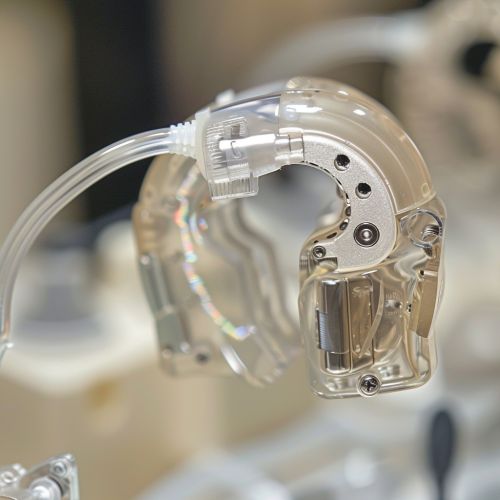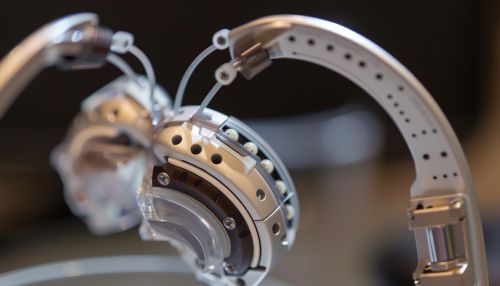Cochlear implant
Overview
A Cochlear implant is a surgically implanted neuroprosthetic device that provides a sense of sound to a person with severe to profound sensorineural hearing loss. Unlike traditional hearing aids, which amplify sound, cochlear implants bypass the damaged portions of the ear to directly stimulate the auditory nerve. Signals generated by the implant are sent via the auditory nerve to the brain, which recognizes the signals as sound.
History
The development of the cochlear implant has been a gradual process over the past half-century. The first attempts at electrically stimulating the auditory system were made in the 1950s by French researchers André Djourno and Charles Eyriès. Their device, however, only allowed the perception of rhythm and not speech understanding. The first single-channel cochlear implant was independently developed by William House and John Doyle in the United States and Graeme Clark in Australia in the 1970s. The first multichannel cochlear implant, which significantly improved speech understanding, was developed by Ingeborg and Erwin Hochmair from Austria in the early 1980s.
Anatomy and Physiology
The human ear can be divided into three parts: the outer ear, the middle ear, and the inner ear. The cochlea, the spiral-shaped part of the inner ear, is responsible for converting sound vibrations into electrical signals that can be interpreted by the brain. In individuals with sensorineural hearing loss, the hair cells in the cochlea are damaged or missing, preventing this conversion from occurring. A cochlear implant bypasses these damaged hair cells and directly stimulates the auditory nerve.


Components of a Cochlear Implant
A cochlear implant consists of two main components: an external portion that sits behind the ear and an internal portion that is surgically placed under the skin.
External Component
The external component, also known as the sound processor, captures sound through a microphone, processes the sound into digital code, and transmits the code to the internal component of the implant.
Internal Component
The internal component, also known as the receiver-stimulator, receives the digital code from the external component, converts it into electrical signals, and sends these signals to the electrodes implanted in the cochlea.
Surgical Procedure
The surgical procedure to implant a cochlear implant involves a mastoidectomy and a cochleostomy. A mastoidectomy involves drilling into the mastoid bone behind the ear to access the middle ear. A cochleostomy involves creating a small hole in the cochlea to insert the electrode array.
Post-Operative Care and Rehabilitation
Following surgery, there is a period of healing before the cochlear implant is activated. Once activated, the user may need to work with an audiologist and speech-language pathologist to learn or relearn how to interpret the sounds created by the implant.
Benefits and Limitations
Cochlear implants can significantly improve the hearing and quality of life for individuals with severe to profound sensorineural hearing loss. However, they do not restore normal hearing and outcomes can vary widely. Factors influencing the success of a cochlear implant include the age at implantation, the cause of hearing loss, and the individual's motivation and commitment to rehabilitation.
Future Developments
Future developments in cochlear implant technology may include improvements in sound quality, increased compatibility with other devices, and advances in surgical techniques to preserve residual hearing.
